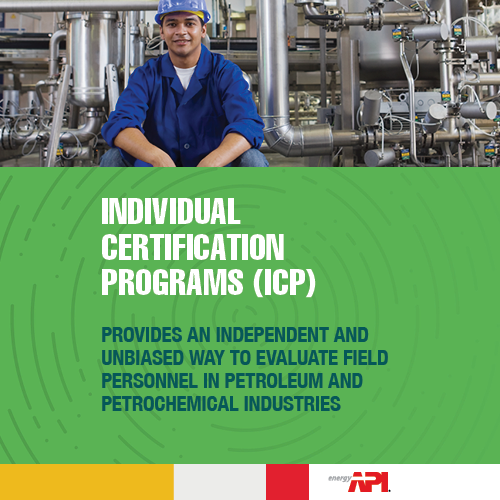Introduction
Welcome to the Source Inspection unit of the Mechanical Integrity Professional Initiative. Inside this unit, you will learn about the important role of source inspection in the overall quality assurance/quality control (QA/QC) function for designing, fabricating, and installing equipment for use in the oil & gas and chemical industries.
Much of the information found in this unit comes from API’s Guide for Source Inspection and Quality Surveillance of Fixed Equipment. In fact, this unit may certainly be used as a supplemental study reference for those who are interested in obtaining one of the API Source Inspector certifications. While it is not a replacement for detailed training or API’s official guide, it may provide additional context to help understand the Source Inspection body of knowledge.
Exploring the Source Inspection Unit
This unit contains 7 sections.
For the purposes of this project, we may use the following terms interchangeably:
- Purchasers = Buyers = Facilities
- Suppliers = Vendors = Supplier/Vendors (S/Vs)
What is Source Inspection?
Source Inspection is the process of providing quality surveillance of materials, equipment, and fabrication being supplied for use in facilities. It provides confidence to purchasers that the materials and equipment they are purchasing meet the minimum requirements as specified in contractual agreements. In simpler terms, Source Inspection is a way for facilities to verify that what they buy is what they get.
Quality Assurance and Quality Control
As noted above, Source Inspection is an important part of the quality assurance process of the overall QA/QC function for designing, fabricating, and installing equipment for use in facilities. Before going further, it is important to understand the differences between QA and QC.
Quality Assurance is a proactive quality process that aims to prevent defects. It refers to a program of planned, systematic, and preventative activities implemented in a quality system that is intended to provide confidence that a product will consistently meet specifications. It includes the systematic measurement, comparison with a standard, monitoring of processes, and gathering feedback to avoid deviations from specification. The Source Inspector is involved in the QA process.
Quality Control is one part of the larger QA process. It defines the specific steps in the QA process that aim to find potential defects in a product before it is released for delivery. For example, a product may be subject to dimensional verification, visual testing, ultrasonic testing, etc.
The Source Inspector, by means of their QC process, specifies the particular QC steps necessary during manufacture/fabrication of a product. In turn, the Supplier/Vendor of the product is responsible for ensuring that those QC steps are adhered to.
The QA Process
The QA process (and the role that Source Inspectors play within it) can be divided into five sections, or steps. These steps are explained in-depth on the following pages.

















